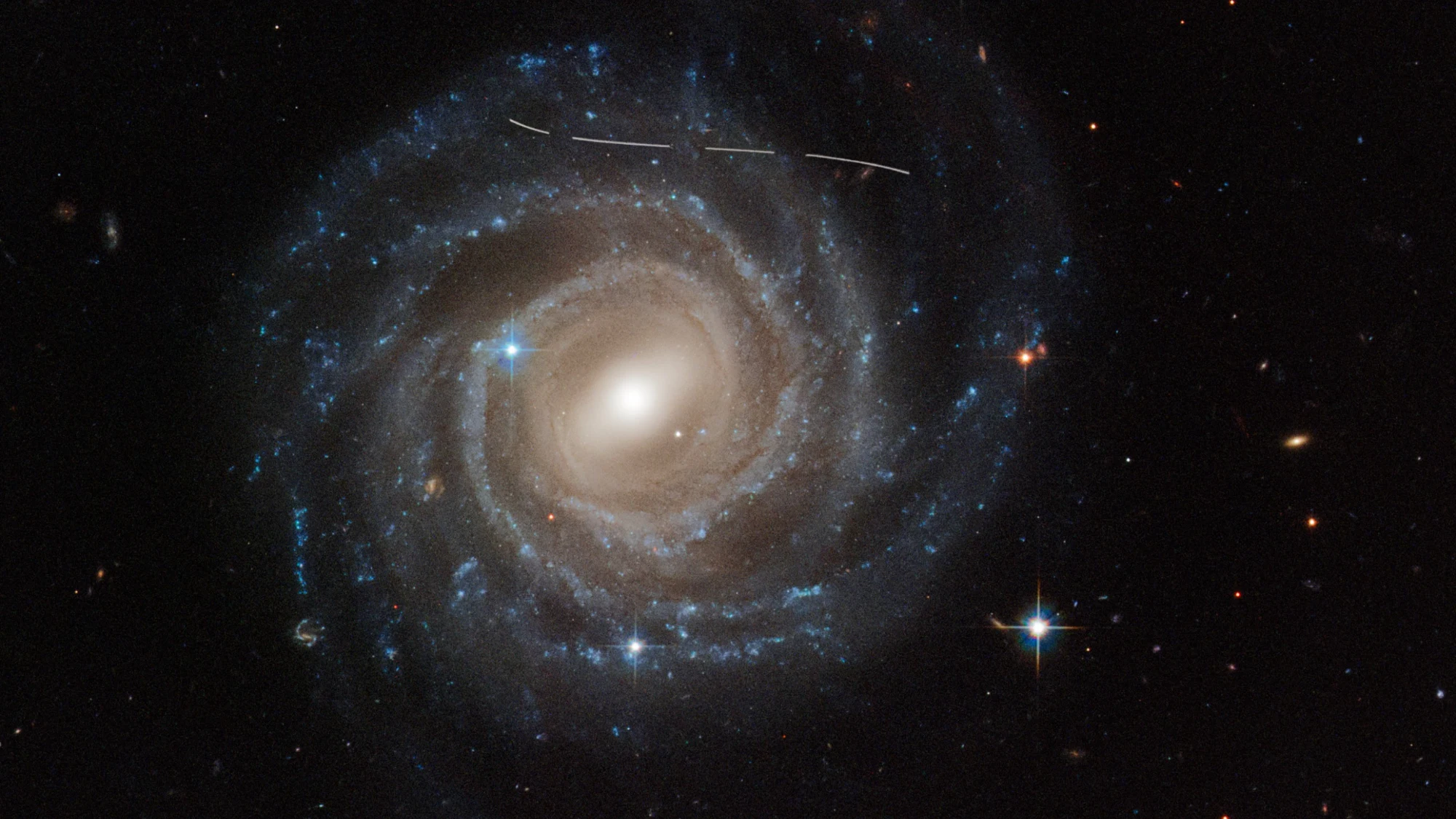
Think of that white squiggle across the galaxy photo like a photobomb! Hubble was busy snapping a distant galaxy, when an asteroid zipped through the picture way closer to home.
The asteroid looks curved because Hubble isn't parked in space – it orbits Earth! This makes the asteroid's path seem bendy. While the galaxy is super far away, this asteroid lives in our own solar system, in the asteroid belt.
Think of that white squiggle across the galaxy photo like a photobomb! Hubble was busy snapping a distant galaxy, when an asteroid zipped through the picture way closer to home.
The asteroid looks curved because Hubble isn't parked in space – it orbits Earth! This makes the asteroid's path seem bendy. While the galaxy is super far away, this asteroid lives in our own solar system, in the asteroid belt.
Think of that white squiggle across the galaxy photo like a photobomb! Hubble was busy snapping a distant galaxy, when an asteroid zipped through the picture way closer to home.
The asteroid looks curved because Hubble isn't parked in space – it orbits Earth! This makes the asteroid's path seem bendy. While the galaxy is super far away, this asteroid lives in our own solar system, in the asteroid belt.
Space news alert! Here's the scoop on finding new asteroids, rocket launches, and cool stuff happening in the sky!
"Asteroids are always on the move, so you can't nail down their location with just coordinates," says Bruno Merín, an astronomer in Spain. "We don't have time to dig through all those asteroid photos!"
So what's the solution? Scientists took 37,000 old Hubble photos, chopped them up, and asked over 10,000 volunteers to help with the search. After a ton of work, they found trails left by 1,701 asteroids – over a thousand were totally new discoveries! They might have found some comets too!
